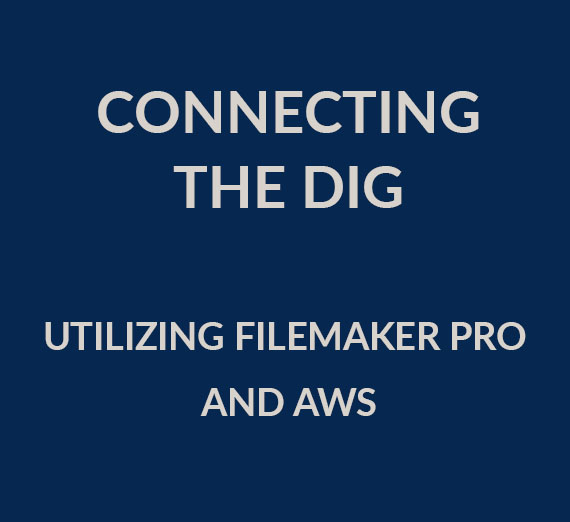Recording the Past with FileMaker Pro

Recording the Past with FileMaker Pro
Collaborating and Exploring
In 2014, Gonzaga University joined a team of universities and archaeologists from around the world to take part in a dig located around the Turkish city of Sinop, exploring the site of the Ancient Greek colony Sinop. As Gonzaga collaborates with three other universities and researchers from a dozen different countries, communication and organization are crucial to the project’s success. Gonzaga’s Dr. Andrew Goldman serves as Field Director for the Sinop Regional Archaeological Project and approached Gonzaga ITS earlier this year about a cloud-based data storage solution utilizing FileMaker Pro.
Goldman describes the dig project, recalling how “you just dug down about five centimeters and started hitting all kinds of ancient material. It would be like digging outside [at Gonzaga] and finding a colonial house.” But he and his team didn’t want to stop at colonial history, and by doing so ignore the history of those who were there before the Greeks ever arrived. “We are the first team to get below the colonial level and actually explore pre-colonial structures. We found out, for example, that the Greeks—instead of bringing in their own pottery and culture—really adapted to the culture of the Black Sea.” With all these new finds and discoveries being made, it was essential for the dig team to quickly and accurately record data, and then share that information with other members of the dig team.
Sharing & Storing with FileMaker
“The idea was to continue using FileMaker,” Goldman recounts, “and then to create this remote site where we’d continue using FileMaker as our platform, with accessibility all over the world.” Goldman’s experience with FileMaker goes back to the beginnings of his career. “I used FileMaker 3.0 for my dissertation twenty years ago,” he says. “I’ve always found it very intuitive, very easy to use.” For context, Goldman and his team are now using FileMaker 18.
Since FileMaker does not technically fall under the umbrella of software supported by Gonzaga ITS, Project Manager Dan Marx was faced with a choice. Marx frames the question as such: “Do we push towards an internal solution that might not meet Dr. Goldman’s requirements, or do we think outside the box a bit and try to implement FileMaker as a solution even though it technically isn’t supported?” Ultimately, they decided on the latter and were able to acquire licenses for Goldman’s team members. Since FileMaker doesn’t have a built-in cloud storage function, Marx and the ITS team utilized Amazon Web Service as a means of remotely accessing and storing the data, allowing the international dig team to access the data instantaneously from wherever they needed to.
“I’m grateful to IT for saying ‘okay, this is clearly the program you prefer, let’s see how we can work it out so you can do this,’” says Goldman. “That was huge.” While Goldman was unable to travel to the dig site this year for political reasons, he’s been able to work closely with those who are there through the database. “It’s a terrific way to share data,” he says. For him, the new system has brought a host of benefits and game-changing features to the world of archaeology. He recounts working on the dig a few years ago, when his laptop completely died, leaving him out of luck when needing to access data that had been stored on it. But now, with a cloud-based storage system, Goldman rests easier. “It’s all secure. It’s all up there. It’s safe.”
The Future of History
Now that the shared database is up and running, Goldman and his team are excitedly looking to the future of their dig, and how this technology can be utilized further. “We want to be able to have the entire excavation site wired for internet,” he says. “Then every Trench Supervisor will have their own iPad and be using FileMaker Go (a mobile version of FileMaker), and will be able to add the information into the database as it comes from the field.” Thinking back to the days when field research notes were written by hand in journals, Goldman emphasizes just how beneficial to the world of archeology a system like this is. “This is where most excavations are moving...it’s making a fundamental change to the way we do things. It’s a tremendous leap forward.”
